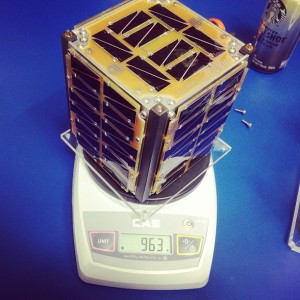It is expected that the amateur radio CubeSat FITSAT-1, built by students at the Fukuoka Institute of Technology, will re-enter the Earths atmosphere and burn-up by Thursday, July 4.
FITSAT-1 and four other CubeSats were deployed from the Internatonal Space Station (ISS) on October 4, 2012. Three of them, WE-WISH, TechEdSat and F-1 have already de-orbited. All of the CubeSats were 1U in size (10x10x10 cm, 1-1.2 kg) except for RAIKO which is a 2U CubeSat twice the size and mass (20x10x10 cm, 2 kg).
Masahiro Arai JN1GKZ has produced a chart showing the decline in altitude of the five CubeSats and compares them with the far larger ARISSat-1 satellite deployed from the ISS on August 3, 2011.
As well as the CW telemetry beacon on 437.250 MHz FITSAT-1 also has a 1200 bps AX.25 packet radio transmitter on 437.445 MHz, a high-speed (115.2 kbps) data transmitter on 5840.0 MHz and has flashed Morse code to observers on Earth using an LED array.
Takushi Tanaka JA6AVG requests that radio amateurs listen out for the CW telemetry beacon of FITSAT-1 on 437.250 MHz (+/- 10 kHz Doppler shift) during the last few days. Reception reports should be emailed to: tanaka at fit.ac.jp
FITSAT-1 website http://www.fit.ac.jp/~tanaka/fitsat.shtml
Further information and pictures of the CubeSats are at
https://amsat-uk.org/satellites/techedsat-f-1-fitsat-1-we-wish/
Free satellite tracking software:
• SimpleSat Look Down http://www.tomdoyle.org/SimpleSatLookDown/
• Gpredict http://gpredict.oz9aec.net/
• Orbitron http://www.uk.amsat.org/?p=9051
Keplerian Two Line Elements (TLEs) ‘Keps’ for CubeSats are at http://celestrak.com/NORAD/elements/cubesat.txt







You must be logged in to post a comment.